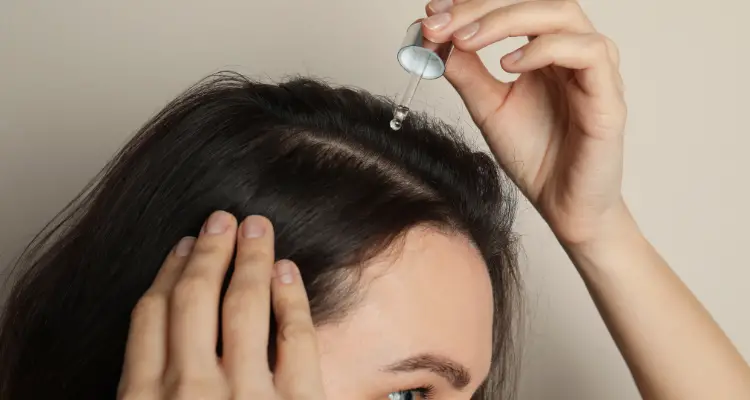Studies have found that hair oiling can help revive your locks and add a natural shine. It can also help tame frizz and provide your locks with a soft texture.
Ayurvedic traditions recommend hair oiling often, especially at night before a head bath. But are you doing it right?

How To Oil Your Hair – 5 Steps
Follow the below steps to oil your hair the properly:
Step 1: Know Your Hair Type
Hair oils help promote healthy scalp conditions that support hair growth, but the specific benefits vary by hair type. Those with fine hair, for example, may find that oiling weighs their strands down or don’t like how their hair smells afterward.
For those with wavy or curly hair, massaging the oil into your scalp helps stimulate blood circulation and helps your strands retain moisture. This can also make your hair less prone to tangles and dryness.
For those with coarse or kinky hair, choosing an oil rich in vitamins and minerals can strengthen and protect your strands from damage. This can prevent your hair from breaking and keep looking lustrous and shiny. Hair oils can also help fight against frizz and flyaways by coating the strands and protecting them from humidity.
Step 2: Choose the Right Oil
Hair oil can hydrate and lock in moisture, stimulate growth, reduce dandruff, and address other concerns. Choosing the right hair oil for your needs and the right application technique is important to ensure you reap all its benefits.
Some people prefer to apply hair oil when their hair is clean and dandruff-free, but others say it works best soon after you shampoo. You can try both methods to find what suits you.
Hair oils are typically made from carrier or base oils (like jojoba oil) and essential oils, which are more concentrated. If you use essential oils, be sure to dilute them first with the base oil to avoid scalp irritation. Choose a non-toxic, fragrance-free, organic hair oil for optimal results.
Step 3: Apply the Oil
Hair oiling is an essential part of a healthy hair regimen. It nourishes your locks, reduces dandruff, and promotes hair growth. However, knowing how to do it correctly is important to get the best results.
Start by warming the oil slightly. This allows it to penetrate your hair more deeply and seals the cuticles of your strands to keep them moisturized.
Once the oil is warm, apply it to your scalp and strands with your fingertips. You can also massage your hair ends if you wish. Avoid combing your hair right after applying the oil, as it can cause breakage. Your scalp and strands are fragile now, and your hair is relaxed, so it’s easier to fall off.
Step 4: Leave it on
The right technique helps your hair absorb the oil and benefit from its nourishing properties. You don’t want to leave the oil on your head too long because it can attract dirt and grime.
For best results, apply the oil before washing your hair. This way, the strands are damp and can fully absorb the oil. It also helps prevent the cuticle from closing so the oil can penetrate deeper into the strands.
Massage the oil into your scalp, then tie your hair into a bun or braid or wrap it in a shower cap. This will help protect your pillowcase and simplify washing the oil in the morning. This method provides intensive treatment and strengthens your hair from the roots to the ends.
Step 5: Rinse it Off
When you apply hair oil and not rinse it off properly, your scalp becomes clogged with product residue. This can lead to oiliness, dandruff, and itching.
You can start off with lukewarm water and pre-rinse your hair. The warm water will help wash out the excess oils and products your shampoo can’t remove.
After your lukewarm water rinse, gently massage your scalp with the pads of your fingertips, working the oil into the roots and strands. If you have long hair, work in one-inch sections. Avoid using too much oil, as it can weigh down the length of your hair and cause it to become limp and dull. For this reason, Cleveland recommends treating your hair only from the mid-lengths to the ends. This will ensure that your strands are well-hydrated.

